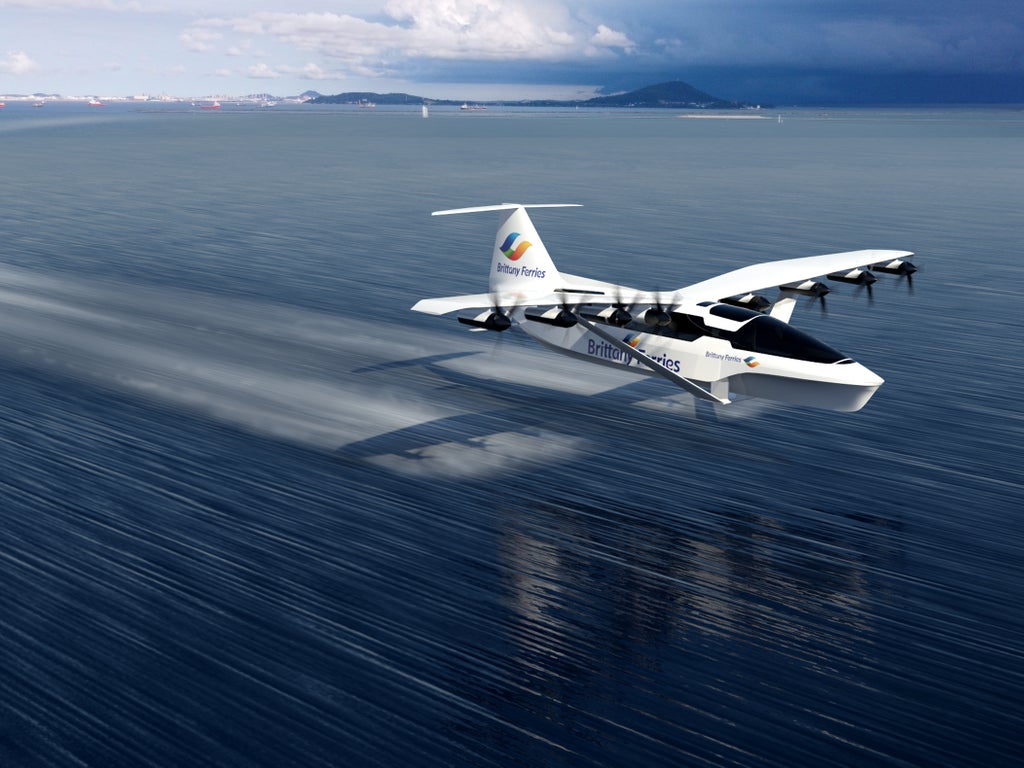
Forget giant ships: a leading cross-Channel ferry line is moving into zero-emission, sea-skimming flying ferries. Brittany Ferries has signed a letter of intent for a new electric-powered “seaglider”.
The craft looks rather like a 20th-century seaplane aircraft but skims across the waves like a hydrofoil. It is hoped to be in service by 2028, carrying between 50 and 150 people at speeds of up to 180mph – many times faster than conventional ships.
Brittany Ferries forecasts that the voyage from Portsmouth to Cherbourg could be covered in as little as 40 minutes. The current overnight journey takes eight hours,
The concept is being developed by a Boston-based firm, Regent – standing for Regional Electric Ground Effect Nautical Transport. It is called a “wing-in-ground effect vehicle,” or Wig for short. The designers hope to be carrying passengers on smaller electric craft by 2025.
The idea is to harness the ground effect known to aircraft pilots at low altitude. This is the cushion created by high-pressure air trapped between wings and the ground or water while flying at low altitude.
“Seagliders are therefore akin to a hovercraft with wings, rather than a skirt,” says Brittany Ferries.
In open water, it takes off, riding the air cushion all the way to its destination. Wing-mounted propellors provide the thrust to take to the air at low speeds, while electric motors regulate air flow over wings while riding the air cushion.
Frédéric Pouget, ports and operations director for Brittany Ferries, said: “Seaglider is an attractive and exciting concept and we look forward to working with Regent in the months and years to come.
“We hope this may help bring commercial success in the years that follow. Who knows; this could be the birth of ferries that fly across the Channel.”
The maximum range is initially planned to be 180 miles with existing battery technology, which would be more than enough for cross-Channel routes as well as North Sea crossings such as Harwich to Hook of Holland, operated by rival Stena Line.







